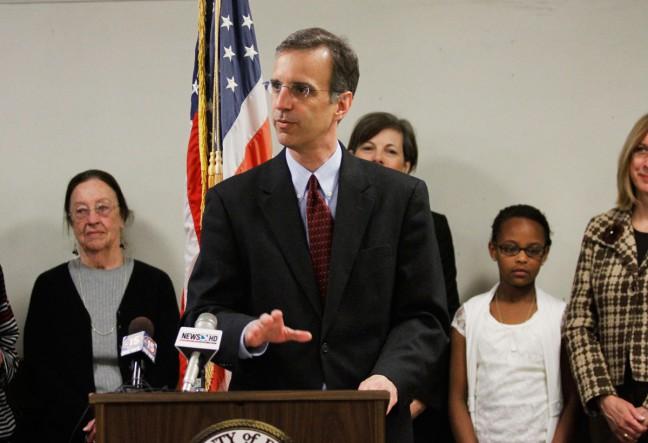Free from financial woes, the Dane County budget will see more services especially in mental health resources in schools and the community.
Dane County Executive Joe Parisi introduced his 2016 budget proposal in early October. The proposed operating budget amounts to $572 million for services, while the capital budget stands at about $35 million. The county has not encountered a budget increase for nearly a decade.
“Locally and nationally, the economy has started to make a comeback,” Josh Wescott, Dane County chief of staff said. “Core services have funding available to meet greater need in the community. What we’re doing now that we have a stronger fiscal foundation beneath us is investing in critical community needs like improving mental health.”
Wescott explained the focus of the budget is to improve mental health response, prevention and intervention in the community, especially schools. One aim is to employ licensed therapists in schools with the plan of diffusing situations that teachers and parents have had trouble dealing with over the years.
Along with addressing the greater needs in the community, the budget will invest resources in shared community valuables, such as the county’s several lakes. Wescott said cleaner lakes will create greater revenue in the form of tourism.
Considering the impact of the budget on University of Wisconsin students, past budgets have produced beneficial additions, such as the popular bike trail and a more reliable city transit system. Additionally, the 2016 blueprints aim to emphasize racial dynamics throughout the community.
“In terms of the county board, some of the budget things that we’re looking at also focus on racial disparities,” County Board Supervisor Leland Pan, District 5, said. “We recently had three workgroups discuss ways to lower mass incarceration and have had a number of recommendations on how to reduce racial disparities and mass incarceration.”
Pan said there is a strong chance the board will fund a helpful data analyst position in hopes of figuring out county government data on racial disparity. He said reducing racial disparities and mass incarcerations is necessary for maintaining the diversity of the UW campus.
While some students may not directly experience the impact the budget will have on relieving disparities and mass incarceration, Pan argues it will be influential to the campus as a whole. Many students have been involved in a call for improving racial disparities and mass incarcerations, while also serving on these workgroups to reduce inequalities.
Pan noted the budget goes to show that with student involvement, the county government does listen to UW students when they engage.
“Improving racial disparity affects our ability to ensure a diverse campus that feels safe for all,” Pan said. “I think many students on campus feel like they are in a hostile territory, and it hurts our ability to improving UW-Madison’s diversity when they feel that Madison is the most [racial] place in the country.”












